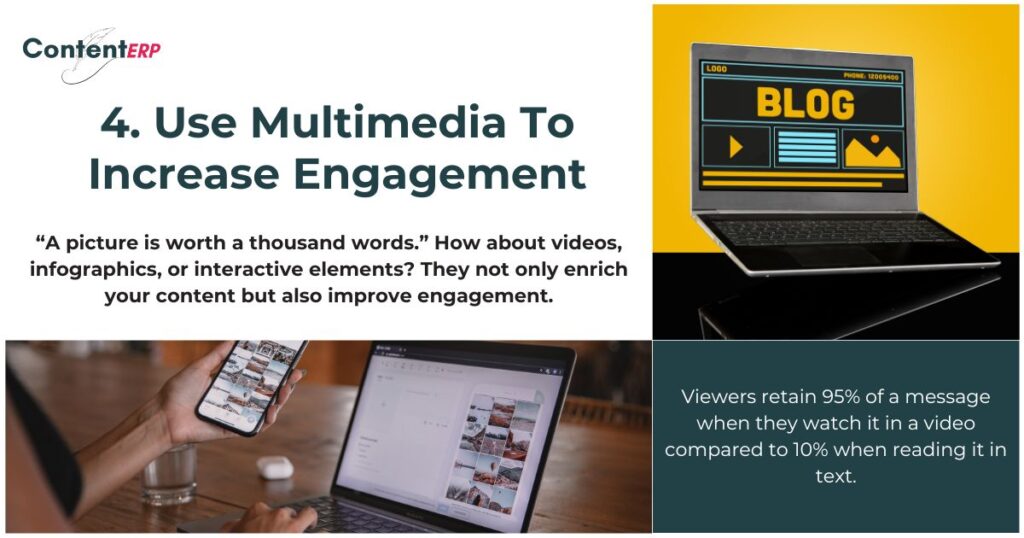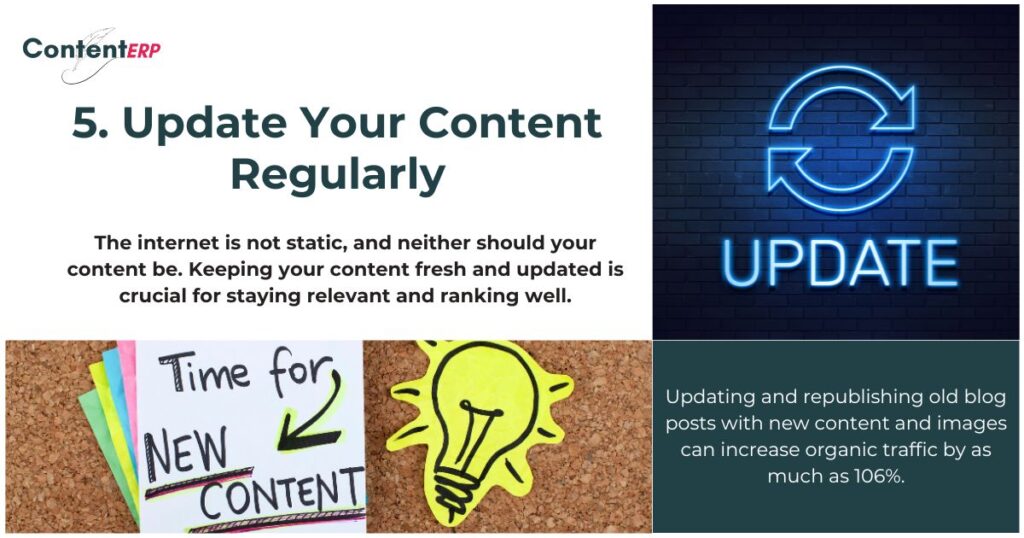There are times when you just stumble across a website and think “Yes, that’s a good website. This is valuable content” in an instant. You feel drawn in as if every word on that page is written just for you. That, my dear, is the magic of a content strategy that is well-written and well-structured especially for niche websites where every reader counts double. However, a winning content structure for niche website is not something you can build without some targeted efforts.
So today, we will help you create and master a structure that not only attracts but also retains your audience with 5 proven tips and tricks up your sleeve.
Ready to turn your niche website into a reader’s favorite library? Let’s get started.
How to Build a Winning Content Structure for Niche Website: 5 Proven Tips
You may find hundreds of opinions via Google on how to structure your content. Here’s the funny part: to know that secret sauce, you have to focus on how they have structured their OWN content more than how they are telling you to do it.
So we have gathered the best actionable secrets and tips for you here to create great content and structure it for your niche website for maximum engagement.
Here you go.
1. Understand Your Audience Inside Out
For a moment, imagine that you’re throwing a dart in the dark and there’s no indication of the target. Without knowing where the target is, the chances that you’ll actually hit the bullseye are slim. That’s precisely what will happen when you create content without knowing and thoroughly understanding your audience.
Not knowing the target audience is also one of the primary reasons 90% of startups fail miserably. You won’t want to be included in that list, right? So all this know-how about your target market is the very first step to create a good content structure for niche website.
Our digital world is already oversaturated so if you do not customize your message to the needs of your audience, it’s highly likely that you’ll miss your mark every single time.
So how can you understand your audience? Here are a few tips:
Use Analytics & Be Data-Driven
We probably may have nothing closer to mind reading than the numbers and graphs you gather in your digital marketing efforts. So platforms like Google Analytics help you gather data and insights on who your visitors are and which content they like the most on your website.
In addition to that, check your website optimization as well and make sure that it is as user-friendly as it can get because a 1-second delay in page response can result in a 7% reduction in conversions on average.
These numbers can add up to thousands of dollars in loss over the years and you certainly won’t want that happening to your business.
Conduct Surveys & Polls
There’s simply no substitute for the surveys and polls you’ll conduct within your audience. They are the best source to gather feedback on what topics they find more interesting and how they prefer to consume your content.
Use Google Forms or tools like SurveyMonkey to get their direct opinions.
With this audience research, you’ll have all the answers you’ll need to create content with a structure that really matters for your niche sites and also resonates with your target market to make your business more productive and impactful.

2. Master the Art of Keyword Research
Keywords act like a bridge between your audience and you. They tell you what your target market searches for so you can create content to fulfill that need. So keyword research is what makes sure that your content will be centered on the topics people want to consume and also that your content is found by just the right people.
Conduct a Keyword Research
Keyword research helps you to identify the search terms that are directly relevant to your niche. Shortlist the keywords that have a high search volume and a low to moderate level of competition to give your content a better chance of higher rankings.
Read More: The Ultimate Guide: How to Find the Perfect Buyer Intent Keywords
Use Tools & Tricks
There are many tools available for keyword research, with one of the most reliable ones being the Google Keyword Planner. You can also go for more comprehensive ones like Ahrefs, Ubersuggest or Moz even. These tools will enlist the difficulty level, the search volumes and also the related terms of your target keywords along with some more comprehensive analysis.
To create a better content structure for niche website, one of the best techniques is to start with broad keywords related to your niche and then use more specific and long-tail keywords. For instance, if your niche is in eco-friendly products, your first term could be “eco-friendly living” and the specific one will be like “biodegradable everyday products.”
Also use long-tail keywords because they are used in 70% of the Google searches, are less competitive and more targeted and often have much higher conversion rates.
Use Keywords Naturally
Once you are done with your keyword research, it is time to use them naturally in your content. It’s a challenge that many cannot successfully complete because it requires you to add the keywords in a way that feels logical and gives the readers an improved experience instead of feeling like a forced and unnatural word stuffing.
Create valuable and user-friendly content with those keywords and use them throughout the body, in your title, your content headings in even in your meta description. Always make them make sense and never compromise on the quality and readability just to use more keywords.

3. Create a Content Hierarchy That Flows
And now we come to the most important part of content structure for niche website – a content hierarchy. What it basically means is that you organize information in such a way that you convey the most important part of the message first and its detailed explanation later.
Your audience will only spend 5.59 seconds on average to read your content, so you HAVE to grab their attention with a good flow before they decide to move on.
Here is how you can create a content hierarchy with a logical flow:
Start with a Strong Introduction
Try to capture the attention of your audience quickly with a compelling hook. You can do it with a question, a surprising fact or even a relatable anecdote. This will grab the attention and let your readers know about what’s to come.
Organize Your Content with Headings and Subheadings
These will guide your readers through the different sections and main points of your content to make the reading experience understandable and helpful. Create each heading with clear words to give the reader a quick idea of what they will learn in that section.
Use Bullets to Highlight Key Points
Bullet points break up large blocks of text and make your content much more readable and easier to scan. Always use bullets if you are going to list any features, benefits, steps or any important points you want to emphasize.
Keep Paragraphs Short For Higher Engagement
Online readers tend to skim everything they usually read so keep your paragraphs short and sweet. This will help you hold their attention for longer periods.
Also keep in mind to use your keywords in the headings and subheadings naturally. They should not feel forced and stuffed in a way that compromises the entire natural flow of your content.

4. Optimize Multimedia for a Better Content Structure
You must have heard this saying “A picture is worth a thousand words”. But in the world of digital content, a picture is not just worth a thousand words – it’s worth countless clicks, shares and engagement if it’s relevant and attractive.
But why use multimedia in your content at all? Because a blog with pictures will get 94% more views than those without.
Large blocks of text are boring and intimidating. Nobody likes to keep on reading unless it’s a book or a novel. So when you add images, videos and infographics, they break up the text and provide some visual respite to the eyes of the readers.
In addition to the above points, properly optimized multimedia is a factor that Google looks at while it ranks your content. Hence, SEO optimization will require you to add visuals and images to your text to make it easy for search engines to rank.
Here’s how you can add them to improve the content structure for your niche websites.
Add Alt Text For Every Image
Every image or video should have descriptive alt text that should also include relevant keywords. This way, the search engines will be able to understand the content of the multimedia.
Create File Names With Keywords
Try to include keyword-rich and descriptive file names for your images and videos before you upload them to your site with the content. This also helps improve the content’s SEO. For instance, “image1.jpg” seems dull and unclear. But a name like “homemade-chocolate-chip-cookies.jpg” will communicate to the search engines what that image is about.
Multimedia Should Be Responsive
High quality, though desirable for many, can slow down your website considerably. So always make sure that your multimedia elements are properly optimized for all devices to improve the user experience and SEO rankings on Google.

5. Continuously Optimize and Update Your Content
The only constant in the digital world is change. So for your content to stay relevant and ahead of the curve, it’s crucial that you review, update and optimize your content on a regular basis.
Why do content audits actually matter? Because regular content audits are like your visits to your doctors for health checks. They will help you identify outdated information to update it, remove any underperforming content and find new opportunities for SEO and content optimization.
So for a better content structure for niche website, here’s how you can optimize your content:
Refresh Outdated Content
Update statistics, facts and links as much as you can. There are times when the updated information can actually negate any older studies. For example, you can’t keep using the stats from 2020 when 2023 stats have been released.
So these regular updates can affect your content in various ways. For one, your credibility improves and your content becomes more authoritative.
And second, refreshing your content can also help Google think that the content is relevant and has the latest info, hence improving its SEO visibility and engagement.
Improve On-Page SEO
SEO is ever-evolving. That dust never settles. So revisit your content every now and then to re-evaluate your keyword strategy, meta descriptions and alt tags. Make sure that your content has all the new keywords that are trending and is also fully optimized for other current SEO best practices.
Encourage Engagement
Update your call-to-action prompts, and encourage comments and shares to boost engagement. Engaging with your audience in the comments section can also provide valuable insights for future content.
Along with that, also pay close attention to user comments and feedback about your content. This direct line of communication with your audience is invaluable and will help you customize your content strategy to meet their needs in the future too.

FAQs on Building a Winning Content Structure for Niche Websites
Q: What is a content niche website?
A content niche website is the one that focuses its content on a specific topic, industry or audience segment. It does not go around like generic websites that cover a wide range of subjects. Niche sites always have a particular area of interest. For example, instead of a broad “health and wellness” site, a niche site may be centered around “yoga for beginners.” Notice the specification?
Q: How do I create a niche website content?
To create content for a niche website, you have to:
- Understand who your audience is, their pain points and also the information they want.
- Identify specific keywords and phrases that are usually used by your target audience that are directly related to your niche.
- Write high-quality, informative content that answers your audience’s questions with real value.
- Use SEO best practices to optimize your content for search engines. This makes it easier for your target audience to find you.
Q: What is the structure of a niche website?
Here’s what the structure of a niche website typically includes:
- Homepage: Introduces your main focus and highlights your key content.
- About Page: Offers information on the site or the author and the site’s mission.
- Blog or Article Section: Contains all the posts and articles.
- Contact Page: Provides ways for visitors to get in touch.
Q: How much can a niche site make?
Some niche sites may only make a few hundred dollars a month, while others can generate thousands or even tens of thousands of dollars monthly. Earnings from a niche site depend on a lot of factors.
This includes the site’s traffic, monetization strategies (such as advertising, affiliate marketing, product sales etc) and the niche’s profitability.
Read More: Are Mobile Blogging Software Worth the Hype? Features & Benefits
Q: What is the difference between a blog and a niche website?
The main difference is in scope and purpose. A blog is often personal and reflects the interests and thoughts of the author. A niche website, on the other hand, is more focused and targeted with a very specific topic or audience segment.
Q: How do I find my content creation niche?
Start with what you know and loveand then look for gaps in the market that your content can fill. 77% of people with internet access read blogs almost on a regular basis, so there’s a huge potential. Once you are done with finding the gaps and creating content, consider how you can monetize your niche. After monetization, keep an eye on the user feedback and suggestions to keep improving and refining your content and strategy.

Conclusion
It’s no small feat to build a good content structure that provides real value to your readers. It requires a lot of effort and commitment to understand your audience, master the keyword research and a seamless content flow. This effort even continues eternally with content optimizations.
But in the end, the effort is well worth it when you see your engagement increase in a drastic way and your website climb up on the search rankings.
Remember that every piece of content is an opportunity to connect with your reader. Make it count. Now, we’d love to hear from you: Which of these tips are you excited to implement? Or do you have any secrets of your own to share? Drop your thoughts in the comments below.

